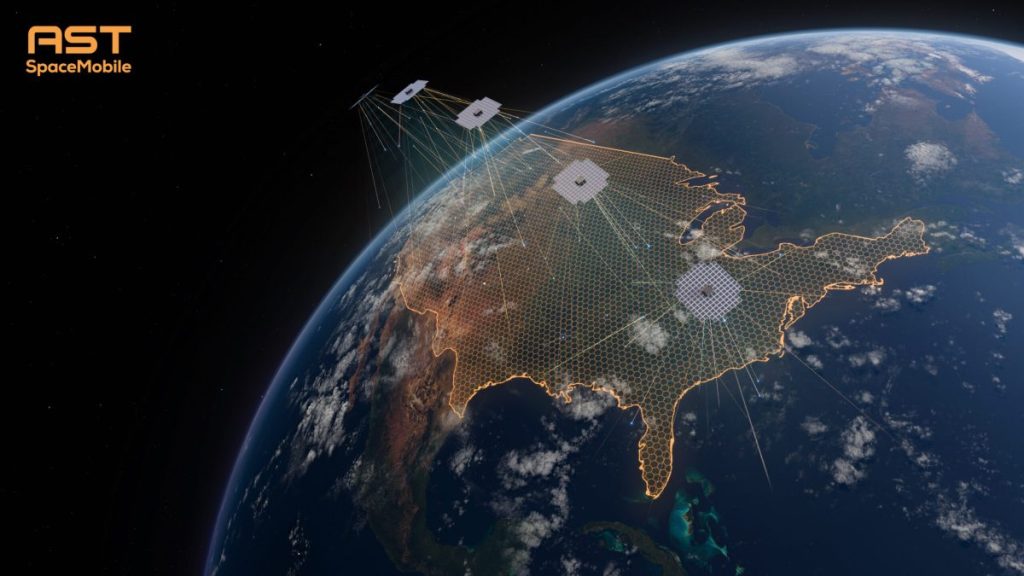
AST SpaceMobile unfolds debut production direct-to-smartphone satellites (Image Credit: Space News)
TAMPA, Fla. — AST SpaceMobile successfully unfolded its first five production satellites after compacting them for their SpaceX launch to low Earth orbit (LEO) last month, the direct-to-smartphone broadband constellation developer announced Oct. 25.
Each unfolded Block 1 BlueBird spans about 64 square meters, featuring the largest solar array commercially deployed to LEO and matching the size of AST SpaceMobile’s BlueWalker-3 prototype launched two years ago.
The Texas-based venture said it is continuing to conduct in-orbit health checks for the spacecraft to prepare them for operations in the United States, although it needs regulatory approval to test services using wireless frequencies from telco partners AT&T and Verizon.
While AST SpaceMobile has decided to first focus on helping U.S. telcos keep their subscribers connected outside cellular coverage from space, the company says it has permission to test wireless frequencies in other countries.
Along with rival direct-to-smartphone constellation developers SpaceX and Lynk Global, AST SpaceMobile also needs permission from the Federal Communications Commission to provide commercial services in the United States.
SpaceX has launched more than 100 direct-to-smartphone satellites and has partnered with T-Mobile in the United States. The companies recently received temporary permission from the FCC to enable emergency alerts and texting after hurricanes knocked out cell towers in North Carolina and Florida.
Lynk Global has not announced a U.S. telecoms partner but has started commercial services in a handful of island nations, where the venture is enabling intermittent space-based connectivity with five satellites in LEO.
According to AST SpaceMobile, five BlueBirds in LEO are enough to provide intermittent connectivity in the United States, totaling less than an hour a day.
The company builds satellites in-house and estimates 45-60 of them would be needed for continuous text, voice, and data connectivity services in the country.
Starting next year, AST SpaceMobile plans to deploy Block 2 BlueBirds with 10 gigahertz of processing bandwidth per satellite — ten times the capacity of a Block 1 BlueBird and supporting 120 Mbps peak data rates.
The Space Development Agency picked AST SpaceMobile and 18 other companies earlier this week to join Hybrid Acquisition for Proliferated Low Earth Orbit (HALO), a program seeking to accelerate satellite technology development.








